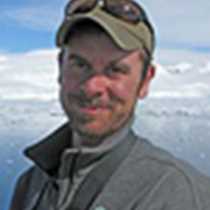Palmer Station / Petermann Island
There are few who come to the Antarctic Peninsula who would say their experience was anything but memorable. Of that demographic not all have the chance to see the science behind the news reports that bring us down here. “Diminishing sea ice levels put penguin species at risk,” “temperature rise around Antarctic peninsula may contribute to ice shelf collapse,” etc, etc. These concerning reports and the influence they have on us wanting to see it all before it is gone must originate from somewhere but not everyone has the chance to meet the people who bring us those figures. Today, for those aboard the National Geographic Explorer, that all changed with a visit to the U.S. Antarctic research base at Palmer Station. Today we had a chance to see this science in action and ask the people who bring us the numbers the questions that are on many of our minds.
Our morning was spent touring the facilities and learning about the lives of those who choose to spend 4 or more months of their lives at the bottom of the earth. From individual projects on krill levels to the physical/biological shifts in ocean composition to the daily lives of everyone on station we left with not only a better understanding of the work that is being done here but what it takes to conduct that work in this environment.
From a tour of a very state-of-the-art research station we headed to an island named Petermann, which also has a history of scientific research but with far fewer frills for its researchers. For nearly 100 years the penguin populations on Petermann Island have been photographed or documented in some capacity with most of this monitoring being done over the past 20 years by an organization which is very near and dear to our hearts hear aboard the National Geographic Explorer. On every trip we bring down a pair of researchers from a non-profit organization named Oceanites who come with a mission to build on the Antarctic site inventory- a project they began in 1994. Their charter is to inventory as many penguin colonies we can gain them access to while, in exchange, passing their results onto us in presentation form before synthesizing and furthering those figures onto their project heads. Today our current Oceanites researchers joined us ashore on Petermann Island and counted 240 Adelie penguin nests and 3020 Gentoo penguin nests while we marched in all directions enjoying the birds and their surroundings. Beyond the nesting Gentoos and Adelie penguins we spotted many lingering Brown Skuas waiting for a chance to feed their own young with fresh penguin meat, the occasional Chinstrap penguin and a few Blue Eyed Shags engaging in impressive feeding displays. When a fish-laden adult returns to the nest site the hungry chicks literally stuff their entire heads into the parent’s throat to gain access to their undigested food, leading to scenes akin to the movie Aliens or a documentary on anaconda feeding behavior!
With the clouds rolling in and word that we will likely try for the Antarctic Circle tomorrow we returned to our warm, dry abode and continued our journey south into, as of this year, unexplored territory south of the circle.



